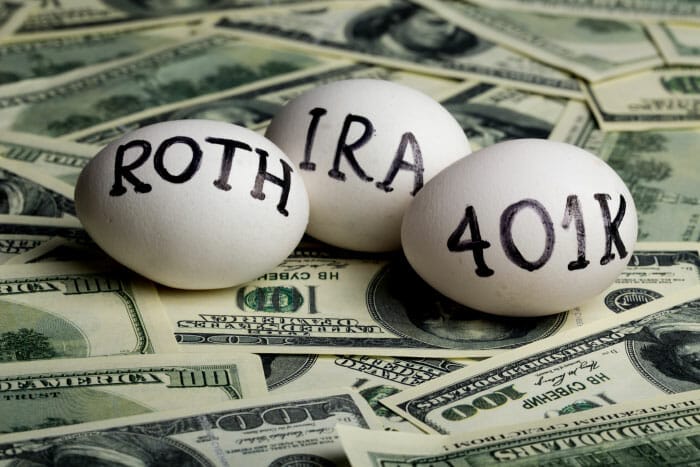
Choosing the best retirement plan for small business owners and their employees is no simple matter. Learning the nuances between a traditional IRA, including the Simple IRA and SEP IRA, can make your head swim. Add to that 401k plan options like Traditional, PEP, Solo, Roth, and Safe Harbor 401k, and you’re practically under water.
The small business owner needs a good strategy to help wade through the primary retirement plan options available. She can start by reviewing retirement plans at a high level. Then zero in on two or three that might work for her business. Finally, she can dig deeper to find the best retirement plan for the business and its employees. Doing the research and implementing a plan will eventually help both business owners and their employees save for retirement. This is a goal well worth the effort.
Benefits of Offering Retirement Plans
Unlike some other countries, the U.S. government does not offer retirement benefits to individuals. Nor are businesses required to offer retirement savings plans to their employees.
Instead, both large and small businesses offer retirement plans for employees as a benefit designed to attract good employees. Retirement plans also help maintain the loyalty of small business employees. Employees feel safer and more secure when they rely on a retirement account that gradually builds up until they retire.
Company-sponsored retirement plans for small businesses can also offer significant tax-deferred benefits. Not only can employer contributions be deducted as an expense, but several plans offer tax credits or incentives as well.
Finally, business owners themselves may wish to set up their own nest egg for when they retire. Entrepreneurs often work diligently to create the best retirement plans for their employees. Sometimes they neglect to implement the right individual retirement solution for themselves.
Types of Retirement Plans

There are several retirement plan options for small business owners to offer their employees, and in some cases, themselves. Some are much more complex than others and all have details that may or may not be deal breakers.
Most retirement plans fall into one of two categories: IRAs or 401k. Below is a high-level summary of seven small business retirement plan options that a business might consider. Two types are IRA plans and five types are 401k plans. Armed with this information, choosing a small business retirement just got a little easier.
Traditional IRA’s
Most traditional IRAs are set up by individuals, not businesses. Individuals create their own IRA account. Then they contribute money either as an annual contribution or as regular contributions throughout the year. Often the contributions are made on a tax-deferred basis. This makes traditional IRA’s a favorable way to reduce tax burdens during high-income earning years. They can be withdrawn (and taxed) for living expenses during lower income “retirement” years.
There are two special types of IRA’s designed as retirement plans for small business owners, not solely for the individual. These include the Simple IRA and the SEP IRA.
Simple IRA
A Simple IRA (Savings Incentive Match Plan for Employees of Small Employers) can be the right retirement solution for your small business if:
- You have no more than 100 employees who earned $5,000 or more during the previous calendar year
- You are not offering any other retirement plan to your employees
The SIMPLE IRA plan has lower start-up and annual costs. It is also simple to operate when compared to other small business retirement plans. Further, businesses could receive a tax credit of up to $500 per year for the first three years.
Small businesses either match employee contributions or contribute a fixed percentage of the employee’s pay. The employer contribution amount can be one of two methods:
- 2% “non-elective” employer contributions. Here the employee receives a contribution equal to 2% of their compensation, whether or not they contribute that much themselves. In 2021, the compensation limit was $290,000, or a maximum contribution of $5,800 for that employee.
- Dollar-for-dollar match: Using this method, the employer matches the employee’s contribution to the plan up to 3%. For example, if an employee contributed $10,000 to their plan, the employer would contribute a maximum of 3% or $300.
While employer contributions are capped at a low amount, Simple IRA funds can add up over time for the employee. For the employer, the paperwork and oversight is significantly reduced compared to traditional IRA’s.
SEP IRA
Simplified Employee Pension IRAs, or SEPs, are savings plans can provide significant income for employees when they retire. Businesses of all sizes, from self-employed individuals on up, can establish a SEP IRA. It is a simple plan.
Implementing a SEP IRA is an excellent option for businesses with fluctuating revenue
There are no start-up or operating costs and no filing requirements by the employer. Here are some other features of a SEP IRA:
- Allows contributions of up to 25% of each employee’s pay
- Only the employer contributes to this plan, not the employee
- The employee is always 100% vested; the SEP-IRA funds belong to the employee even if they leave the company
- The employer must contribute using a formula that is equal for all eligible employees.
- Annual employer contributions are flexible
Employees may have mixed feelings about SEP IRAs. They might prefer to be paid directly via a higher wage or bonus, rather than contribute to their retirement plan. And employees don’t always consider the added benefit as a part of their wages since it is not easily accessible.
Yet implementing a SEP IRA is an excellent option for businesses with fluctuating revenue. The employer can create a plan where they can lower the contribution amounts or not contribute at all. This is especially helpful if the business had a bad year. Employees may not appreciate a lower contribution, but the bite could be worse. Instead, their wages could have been reduced or risk a layoff so their employer could compensate for the bad year.
401k Plans
The 401k plan might very well be the most widely used retirement plan for both small and large businesses today. The plan allows employers and employees to add much more to retirement savings than an IRA. In 2022, the employer-sponsored 401k maximum contribution is a whopping $20,500 vs. $6,000 in an IRA. It also offers a larger catch-up contribution for individuals over age 50: $6,500 vs. $1,000 in the IRA. Usually, the contribution limits apply to the sum of contributions of all 401k accounts that an individual maintains.
Fortunately, there are some new options for small employees to offer 401k retirement accounts. They eliminate much of the paperwork and reporting burden.
There can be a lot of paperwork and red tape to establish and maintain a 401k plan. The business must:
- Create a document that describes the plan
- Coordinate a trust for the plan’s assets
- Develop a system for record-keeping
- Create and offer plan information to all employees that are eligible to participate in the plan
Finally, the annual testing requirement for a traditional 401k plan can be substantial in terms of cost, time and complexity. This is especially true for small businesses.
Fortunately, there are some new options for small employees to offer 401k retirement accounts. They elminate much of the paperwork and reporting burden. Pooled Employee Retirement Plans often designate a parent organization to handle both administrative requirements and annual testing. Safe harbor 401k plans do not require annual testing but also remove some of the retirement plan flexibility.
Traditional 401k Plans
The traditional 401k plan offers the most flexibility for the employer. This includes defining which employees are eligible, and both the match percentage (if any) and the cap. Many plans are tax-deferred, meaning employees are not required to pay taxes on the contribution amounts until they withdraw them.
Annual Testing Requirement for traditional 401(k)s
Traditional 401k plans have an annual testing requirement that ensures the plan provides fair and proportional benefits. Every level of employee will be tested: rank and file employees, managers, and owners. There is a risk of penalties on the employer’s part if the rules are not met. And the level of reporting complexity can be cumbersome and time-intensive for many small businesses.
Pooled Employee Retirement Plan (PEP)
Fortunately, there are some organizations that make a 401k plan more attractive for small businesses. These are called pooled retirement plans (PEP). The PEP strategy was created by the SECURE Act (Setting Every Community Up for Retirement Enhancement) of 2019. This act allows employers from all industries to band together to create a 401k retirement plan. Many parent organizations that offer PEPs provide both the administration work (trust options, record keeping). The also absorb the annual testing and any related liability on behalf of their member 401k companies. Seeking an organization that offers a PEP can be a real game changer when it comes to offering a “corporate-like” small business retirement plan.
Solo 401k
A Solo 401k is a savings account for self-employed individuals to set aside money earmarked for their future retirement. Only owners and their spouses may apply for a Solo 401k. A business with employees is not eligible. The plan is designed to help self-employed entrepreneurs save for their own retirement.
With a Solo 401k, contributions can be contributed as a business expense by the employer. In addition, the business owner and spouse can contribute personal funds. The brokerage firm you use may also offer a Roth option as part of the Solo 401k.
. . . in a nutshell, a Solo 401k is an exceptional plan to
shield the most money possible from taxes
There is a hard contribution cap per person which generally increases each year. The maximum contribution is:
- Individual contribution limit – $20,500 (plus catchup noted below)
- Non-elective employer contributions (the company part) – up to 20% of net self-employment earnings.
Combining both of the above together, there is a total cap of $61,000 per person per year. There is also a catch-up contribution of an extra $6,500 for those 50 or older.
There are many other rules about Solo 401k’s. But in a nutshell, a Solo 401k is an exceptional plan to shield the most money possible from taxes. Employing your spouse also allows a double-dip tax advantage of sorts. Finally, this type of plan can shield the individual from taxes when income is generated by a side business. When combined with a Roth IRA, the Solo 401k is one of the very best retirement plans for self-employed business owners.
Roth 401k—and a little about a Roth IRA
The Roth 401k has been the preferred retirement plan among employees since the 1960s. There is also a Roth IRA, which can make things confusing. With both types of Roth retirement plans, individual contributions are taxed the year that contributions are added to the account. This taxable factor is the main difference between Roth and many other plans. Almost all other retirement plan contributions are tax-deferred and not taxed until the funds are withdrawn.
Some funds in both types of Roth accounts are tax-deferred though. This includes any dividend income that is received and reinvested in the account.
Main Differences Between Roth IRA and Roth 401k
In addition to the fundamental differences between IRAs and 401k’s, here are the main difference between a Roth IRA and a Roth 401k:
- A Roth 401k can have a matching employer contribution. The amount is generally between 2% and 5% of an employee’s paycheck. The employer portion is not taxed. It is another part of a Roth 401k that isn’t taxed until it is withdrawn.
- There are no income limits for a Roth 401k. If an employer offers a Roth 401k, it must be available to all employees, regardless of their salary or wages.
- There is a required minimum distribution (RMD) on a Roth 401k. This means that the account owner is required to start taking minimum distributions from the account beginning at age 72. This assumes they are no longer working or are not a 5% owner in the company sponsoring the plan. These withdrawal requirements are not included in a Roth IRA.
Deciding on a Roth 401k retirement plan is usually based on desiring the tax payment when the income is earned. Combining a pretax Roth with another type of 401k is often a good solution. This is an instance where small business owners should consider offering more than one type of retirement plan.
Safe Harbor 401k
401k safe harbors can be used to create a variation on traditional nontaxable 401k options. Timing for the small business owner when offering this type of retirement plan is critical. The plan must be in effect for 3 months of any calendar year to claim that year’s tax benefits. This would make October 1 the deadline for implementing a safe harbor account. The caveat here is that employees must receive “reasonable” notice about the safe harbor offer. Since notice can be between 30 and 90 days, the defined benefit plan must be in effect much sooner. Otherwise, that year’s tax benefits for the company’s retirement plan cannot be claimed.
The largest difference between a safe harbor retirement plan and other plans is the removal of the IRS annual nondiscrimination testing requirement
While the safe harbor 401k is similar to a traditional 401k, it does have some differences:
- The largest difference between a safe harbor retirement plan and other plans is the removal of the IRS annual nondiscrimination testing requirement. For small businesses, this can take a big burden off their administrative staff.
- Safe harbor plans require employers to contribute to their employees’ retirement plans. Many traditional 401k’s do not require that contribution. The safe harbor employer contribution can either be:
- A minimum of 3% of the employees’ compensation—regardless of whether they contribute to the account themselves, or
- A matching contribution. This strategy encourages the employee to contribute to their retirement as well as their employer.
- Safe harbor retirement plans require all contributions to be 100% vested. The employee legally owns this retirement account and can take it with them if they leave the employer. Conversely, other types of retirement plans may have stipulations where the employee is not entitled to all of the contributions for up to 6 years.
When can the safe harbor 401k might be the best retirement plan for a small business? If they wish to offer benefits of traditional 401k retirement accounts yet avoid the mandatory government compliance testing. Safe harbor plans are one way to do this.
Start Your Small Business Retirement Plan Today
With so many options for small business retirement plans, it’s a great time to create a plan. Alternatively, it may be the time to switch plans from one that is not working. As a small business owner, you’ll attract better employees and maintain their loyalty, all while experiencing tax benefits. The best retirement plans are those that are right for your particular business and employee situation. You’ve already taken the first step by reading this. Now it’s time to take the next one.
Feel free to contact Simply Counted with any questions about retirement savings accounts or 401k options. We’re happy to help you and your employees save for retirement with the best retirement option for you.
About the Author

Diana Kasza
Former President of Simply Counted Business Services, Inc.Diana is an Accredited Business Accountant/Consultant with more than 25 years of experience. She is a graduate of Ferris State University and an active member of Toastmasters International.